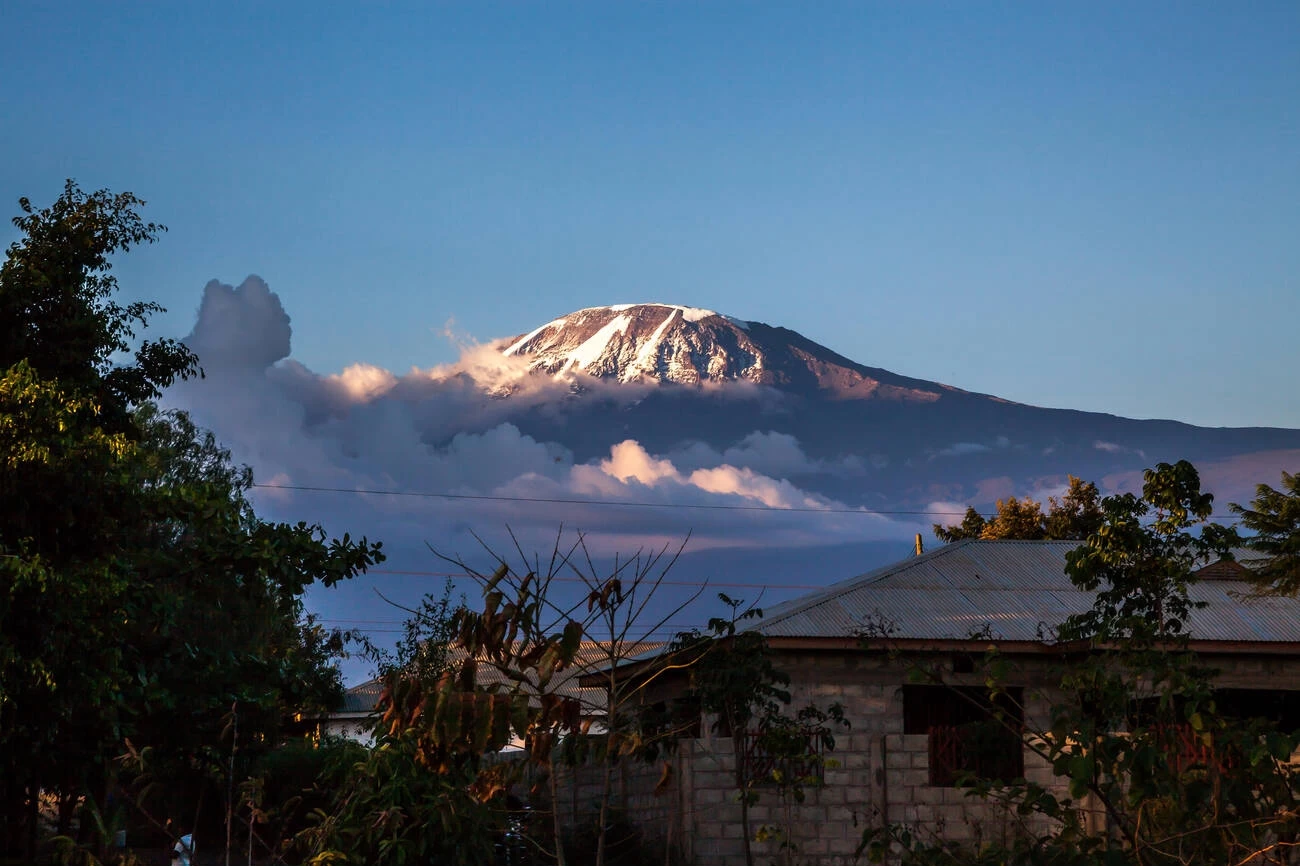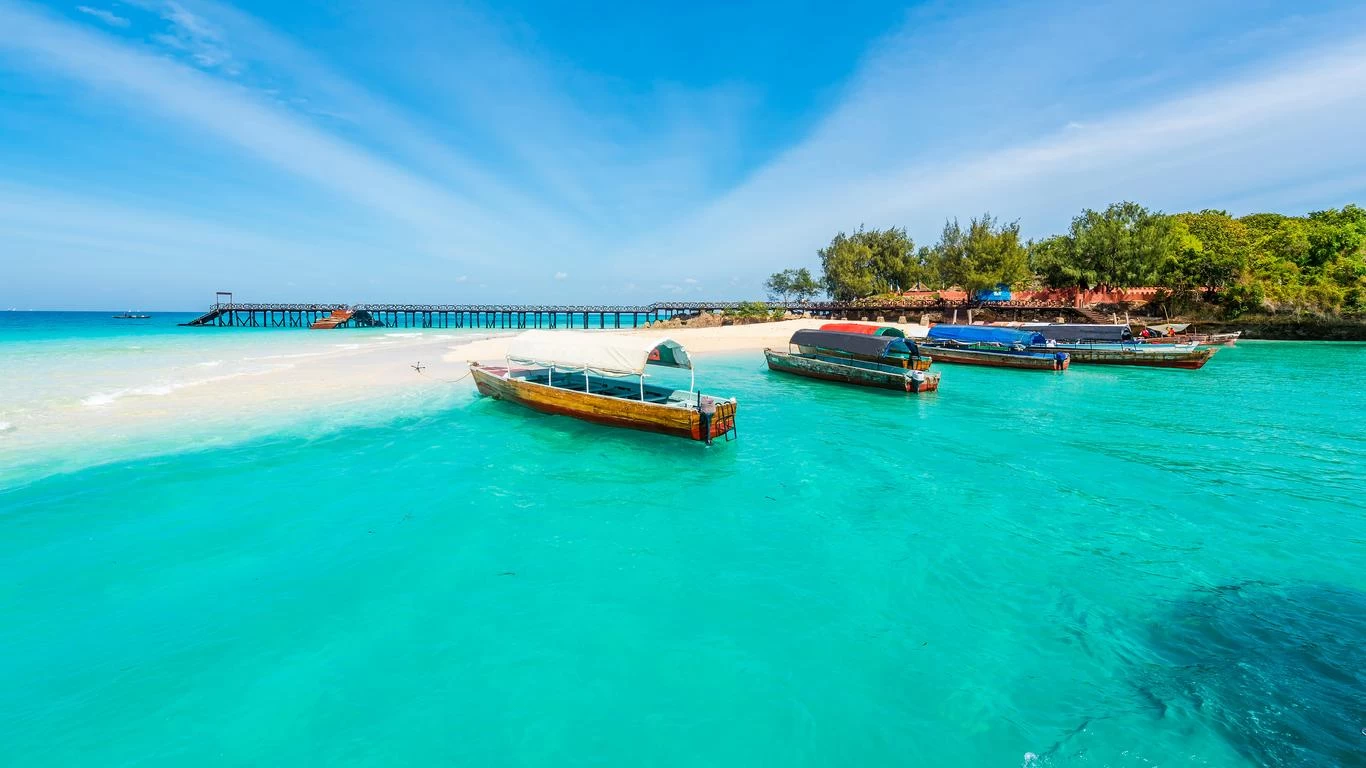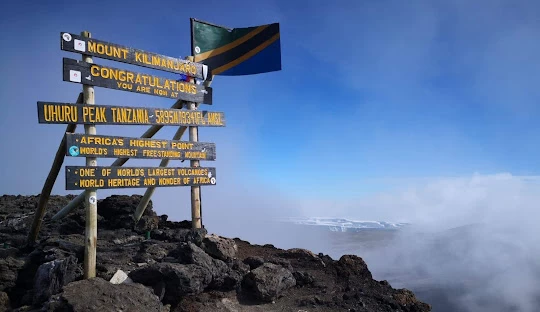Tanzania
A Jewel of East Africa
Tanzania is a land of contrasts and connections, where the ancient and the modern coexist in a delicate balance. It’s a place where the natural world is both untamed and breathtakingly beautiful, and where cultural richness is woven into the very fabric of everyday life. Whether you’re trekking through the wild landscapes of the Serengeti, relaxing on the serene beaches of Zanzibar, or immersing yourself in the vibrant culture of the local communities, Tanzania offers an experience that is both profound and unforgettable. Here, every traveler finds a piece of themselves, lost in the timeless wonder of a land that is as enchanting as it is enduring.
Tanzania Highlights
Start from
$2999Kilimanjaro Mount
Start from
$2999Tanzania Luxury Package
Start from
$9999Tanzania Family Tour
Start from
$3999Tanzania & Kenya Great Migration Safari
Start from
$11999Tanzania & Kenya Wildlife Safari
Start from
$8999Related Blog
Explore our blog for more details and insights on this topic.
Nestled in the azure waters of the Indian Ocean, Zanzibar beckons travelers with its stunning beache...
1) Wildlife Both Kenya and Tanzania offer unparalleled safari wildlife experiences, fea...
Why Choose Tanzania for a Family Adventure? Tanzania is an outstanding destination for a family s...
Preparing for a safari adventure demands thoughtful packing, focusing on essentials rather than over...
Preparing for safaris is essential, but packing for safari means bringing only the kitchen sink. Ple...
No, climbing Mount Kilimanjaro requires the presence of a guide. Whether you are embarking on a full...
WHAT WE OFFER
Do You Have Questions ?
The ideal times for a Tanzania visit are during December to March or June to October, when the weather is pleasant, mostly dry, and wildlife viewing is exceptional. April to May brings the primary rainy season, followed by a shorter wet spell in November. These rainy periods attract fewer tourists while providing ample vegetation for grazing animals. February welcomes the calving season, offering a captivating glimpse into the tender moments of wildebeest and other mammals as they take their first steps in the world.
The Great Migration stands as nature's grandest procession, a remarkable journey undertaken by over two million animals, including wildebeest, zebra, and gazelle. Annually, these majestic creatures traverse the landscapes of the Serengeti in Tanzania and the Masai Mara in Kenya, following a clockwise route. While this cycle persists year-round, the herds predominantly roam the Southern Serengeti of Tanzania from December to early March. As April arrives, ushering in the long rains, the migration begins its northward journey through the central and western Serengeti, driven by an insatiable hunger for grazing. From June to July, the vast herds graze their way through the western corridor of the Serengeti, steadily advancing towards the lush plains of the Masai Mara.
Tanzania teems with safari park choices, from the expansive Serengeti National Park to the stunning Ngorongoro Crater and the wildlife-abundant Tarangire National Park. Tucked away in the remote southern corners of Tanzania, the vast landscapes of Ruaha and Nyerere (Selous) National Parks promise extraordinary wildlife encounters for adventurers seeking off-the-beaten-path experiences. A voyage to Tanzania also presents the opportunity to conquer Africa's tallest peak, Mount Kilimanjaro, while the tranquil haven of Zanzibar beckons visitors to unwind amidst a coastal paradise of sun, sand, and sea.
The term "Big Five" encompasses Africa's iconic predators: the lion, leopard, elephant, rhinoceros, and Cape buffalo, making them essential sightings on any safari journey across Kenya, Tanzania, Botswana, and South Africa.
While both destinations offer remarkable wildlife experiences, Tanzania stands out with its majestic Mount Kilimanjaro, sprawling coffee plantations, picturesque tropical coastline, and the idyllic island getaway of Zanzibar, setting it apart from its northern neighbor. Tanzania's climate tends to be more tropical, resulting in lush, verdant landscapes compared to Kenya. Due to their close proximity and the convergence of the Great Migration, travelers often opt to combine these two countries into a single unforgettable journey.
Tourist Visas are required for U.S. and Canadian passport holders traveling to Tanzania. We recommends an Electronic Tourist Visa (eVisa). To apply online, visit services and immigration and go to tz/visa.
For your safari adventure, we suggest opting for comfortable attire crafted from natural, breathable fabrics. Be prepared to adjust your layers according to the changing temperatures throughout the day. When out on game drives, opt for neutral-colored clothing to blend in with the surroundings while avoiding dark hues like black or navy blue, as they may attract insects. It's advisable to leave camouflage clothing at home, as it's not permitted in game parks. For evening activities, smart casual outfits are suitable, but there's no need for formal attire.


-webp.webp)

-webp.webp)
-webp.webp)
-webp.webp)
-webp.webp)


-webp.webp)
-webp.webp)
-webp.webp)
-webp.webp)


